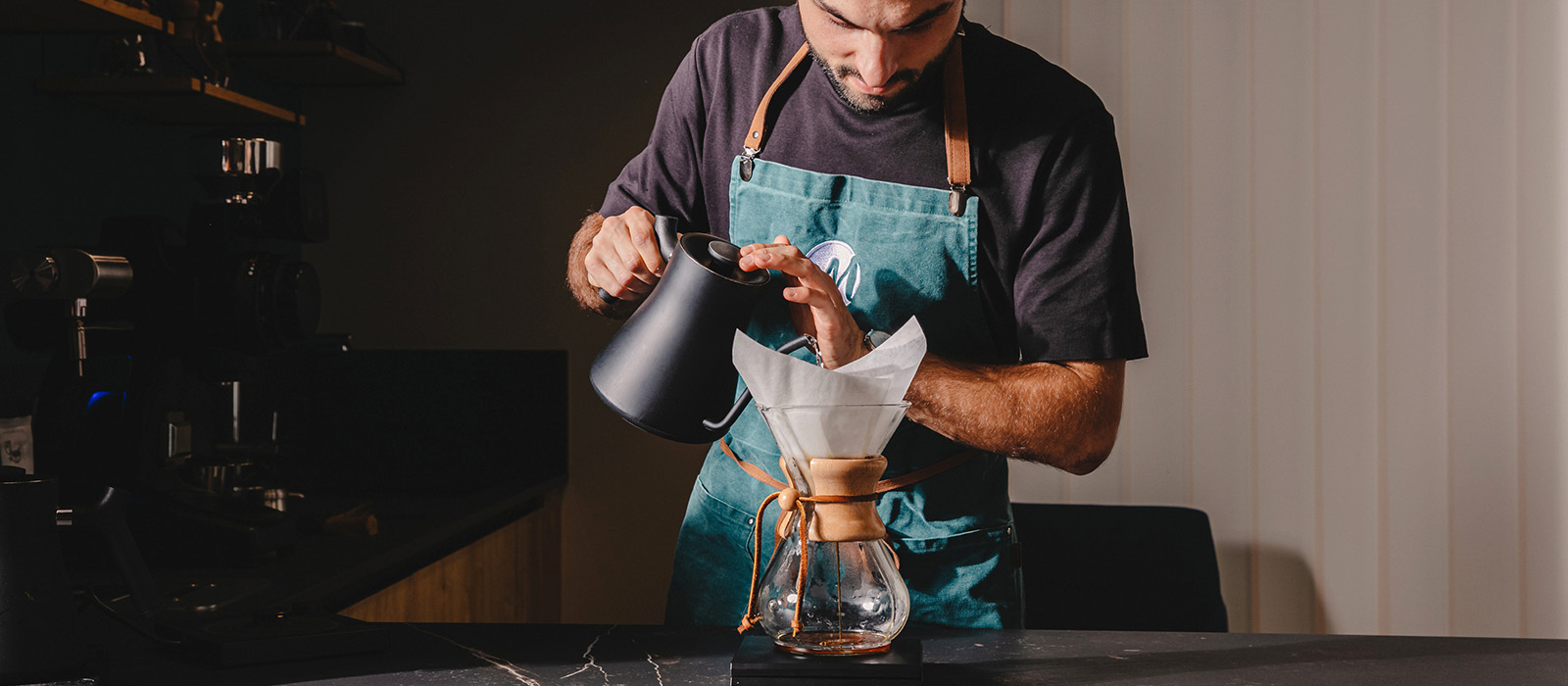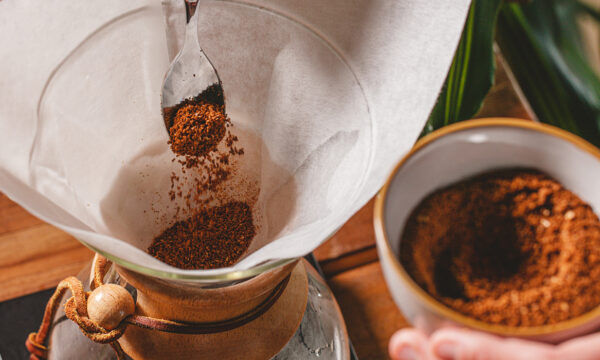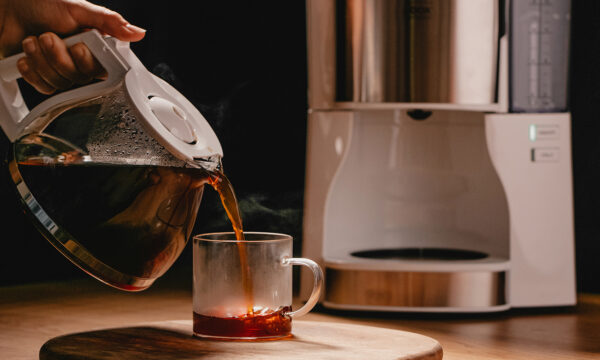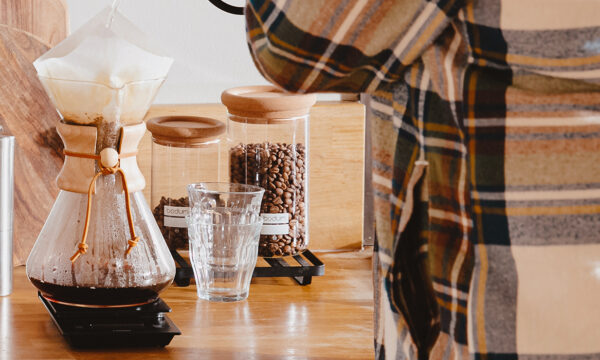
- Home
- What is the difference between a Chemex and a conical coffee dripper?
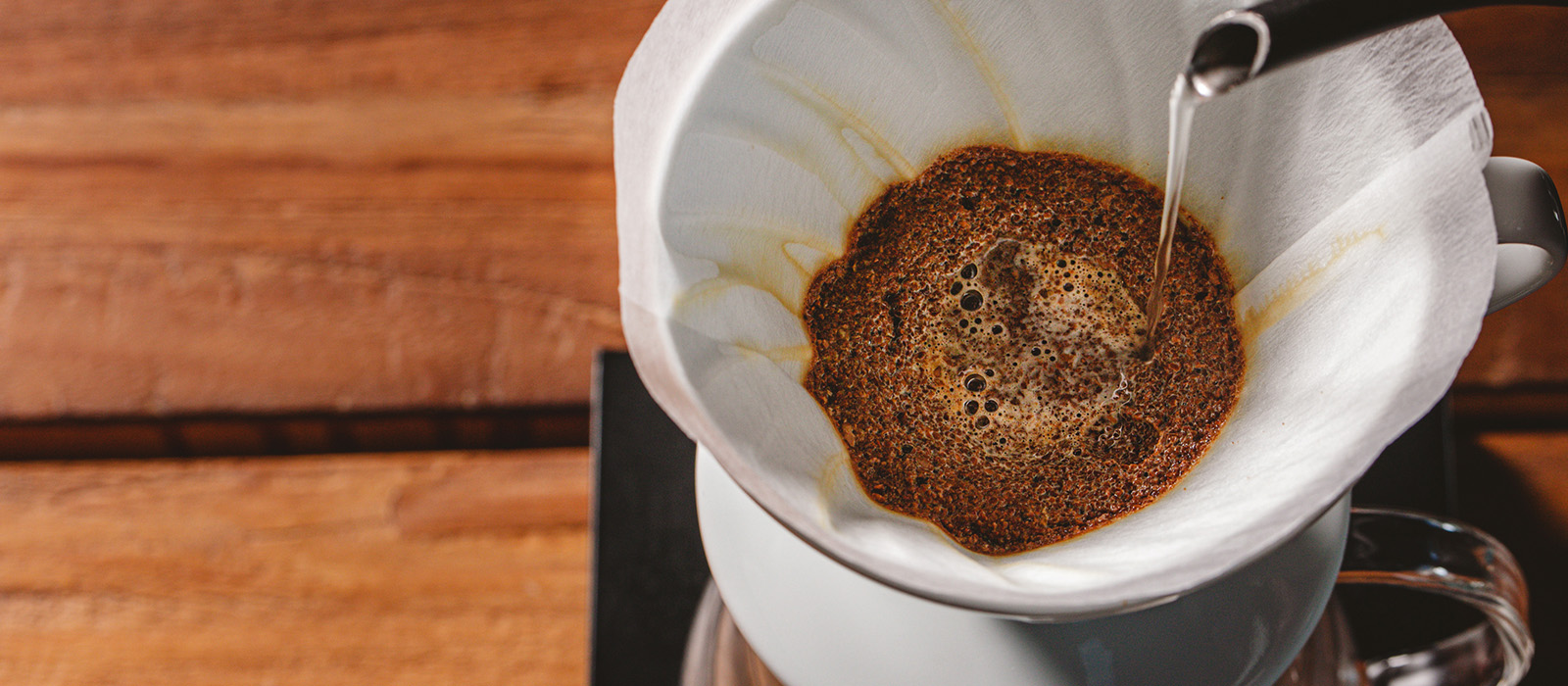
What is the difference between a Chemex and a conical coffee dripper?
Written by Julie
Reading time 5 minThere are so many types of coffee dripper and so many different ways to make slow coffee out there, you could be forgiven for being a bit bewildered by it all. What’s the difference between a Hario V60 and a Chemex? Does coffee from a Clever Dripper really taste any better than coffee from a dripper with a flat bottom? To answer these questions and more, I’ve decided to try out the most popular coffee drippers out there.
The different types of coffee drippers available
- Cone dripper with spiral grooves
- Cone dripper with straight grooves
- Flat-bottom dripper
- Classic dripper
- Clever Dripper
- Chemex
To get fair results for each method, I used the same recipe, the same coffee and the same accessories:
Accessories:
|
Recipe used:
|
For the coffee bean itself, I picked Moka Sidamo Marabou, a fruity Ethiopian specialty coffee bean with citrus notes, roasted by our friends at Cafés Lugat.
ChemexThe Chemex coffee maker is perhaps the most popular slow coffee brewing method. A Chemex is essentially a dripper and a coffee pot all in one. Its design and its shape make the Chemex a unique, desirable object. For the coffee extraction part, it uses its own kind of paper filter, much thicker than usual filters. It means that the Chemex filters out a lot more than other drip methods. The result is an exceptionally smooth, delicate coffee, not a million miles from a tea-style infusion. The body may be light, but it packs a serious aromatic punch! |
|
Hario V60: the conical dripper with spiral groovesThanks to its conical shape and spiral grooves, the Hario V60 coffee dripper produces a clean cup of coffee with pleasing aromatic complexity. Compared to the Chemex, the result is a coffee with more body. Please note: I noticed a real taste difference between the plastic and porcelain versions of the V60. Porcelain retains heat better than plastic. It allows the water to flow better during the infusion process. The coffee I made using the plastic dripper had an ever-so-slightly burnt quality and a bitter aftertaste. With the porcelain dripper, the coffee was lighter, with a nice long finish. To get a better result from the plastic dripper, you just need to play around with the grind size (try a little coarser) and lower the water temperature. |
|
Kinto SCS-04-BR: the conical dripper with straight groovesCompared to its cousin the V60 coffee dripper, this Kinto dripper has a bigger hole and straight grooves. The water flows faster, resulting in a lighter, rounder coffee with better defined aromatic qualities. In other words, a coffee halfway between a Chemex and a V60. |
|
Bairro Alto AltoAir: the wall-free dripperBecause of its striking futuristic look, the AltoAir dripper really stands out from the crowd. The idea behind the design was to remove any material that might affect the coffee extraction. The filter is surrounded by mostly air: the water then flows more easily, more smoothly and a little faster. The result is a coffee slightly more aromatic and more delicate than the V60. Just like the Kinto, you don’t need to worry about getting a bitter aftertaste. The AltoAir therefore sits somewhere between the Kinto and the V60. |
|
Tiamo K02: the flat-bottomed coffee dripperThe Tiamo K02 is a fresh take on the familiar Kalita design: a flat-bottomed cone dripper with three holes, using flat-bottom filters (in the shape of cupcake holders). Its design means that the ground coffee spreads out more during the brewing process, making preparation easier. You don’t need to be a qualified barista to make this coffee! As a result, it’s a great option for anyone looking to try out slow coffee for the first time. The taste is well-rounded and balanced, with a heavier body than the V60. |
|
Melitta: the classic coffee dripperAnother simple way to get to grips with slow coffee, the Melitta drip coffee maker is similar in both design and concept to the very first coffee maker invented by Melitta Benz. As such, this dripper has a wide, flat-bottom base and two holes. The result is a perfectly round and balanced coffee, using a method requiring very little technical skills. |
|
Mr Clever: the clever coffee dripperThe Clever Dripper takes the dripper concept to the next level by allowing you to play around with your infusion time, producing a coffee that’s closer in style to coffee from a French press: very round, well balanced and generally with a stronger body. |
|
To sum up, the following scale shows you how the different slow coffee methods compare
| A little reminder about choosing your coffee… Enjoying slow coffee is all about unleashing flavours and aromatic notes rather than going for pure strength (like a strong espresso for example). Some coffee beans and coffee blends will therefore not taste as good using this brewing method. But of course, there’s nothing to say you shouldn’t experiment! Chemex and cone drippers work particularly well with coffees with fruity notes, since they offer a more delicate result with intense aromas, while flat-bottomed, classic and clever drippers are more suited to round, full-bodied gourmet coffees. Once again, there’s nothing stopping you from trying a coffee with notes of dark chocolate using a Chemex. At the end of the day, technique and recipes can only take you so far: what’s most important is that you enjoy your coffee. Follow your own rules! For what it’s worth, the Kinto dripper is my favourite. How about you? |
Discover all of our articles
